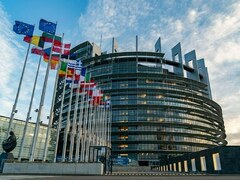HOUSTON: Oil prices ticked up on Monday as investors worried about supply after tensions in the Middle East escalated and as the development of a tropical disturbance in the Gulf of Mexico shut in some production.
Brent crude futures for November were up 51 cents, or 0.6%, to $75 a barrel by 10:21 a.m. ET (1421 GMT). U.S. crude futures for November were up 65 cents, or 0.9%, at $71.65.
Israel attacked hundreds of Hezbollah targets on Monday in airstrikes which Lebanese health authorities said killed at least 182 people, making it the deadliest day in Lebanon in nearly a year of conflict between the Hezbollah and Israel.
After almost a year of war in Gaza, Israel is shifting its focus to its northern border, across which Hezbollah has been firing rockets in support of its ally Hamas.
Oil prices fall on mixed storage report
“More attacks from Israel on Lebanon spawn fear that Iran will become more involved which raises the probability of oil exports being at risk,” said Dennis Kissler, senior vice president of trading at BOK Financial.
Also threatening supply was a tropical disturbance near the Gulf of Mexico. Shell said on Sunday that it would shut production at its Stones and Appomattox facilities in the region as a precautionary measure.
Both oil benchmarks rose more than 4% last week, buoyed by the U.S. Federal Reserve’s decision to cut interest rates by 50 basis points and signal further cuts by end of the year.
Federal Reserve Bank of Chicago President Austan Goolsbee on Monday said he expects “many more rate cuts over the next year” as the U.S. central bank seeks a soft landing for the economy, where it controls inflation without crashing the labor market.
Keeping a lid on prices, however, was an unexpected and sharp contraction in euro zone business activity this month as the bloc’s dominant services industry flatlined while a downturn in manufacturing accelerated.
U.S. business activity was steady in September, but average prices charged for goods and services rose at the fastest pace in six months, potentially hinting at a pickup in inflation in the coming months.
China, the world’s top oil importer, is meanwhile battling deflationary pressures, and struggling to lift growth despite a series of policy measures aimed at spurring domestic spending.
“Oil looks rangebound despite the uplift to risky asset prices from an outsized policy rate cut by the Fed last week,” said Harry Tchilinguirian, head of research at Onyx Capital Group.

























Comments